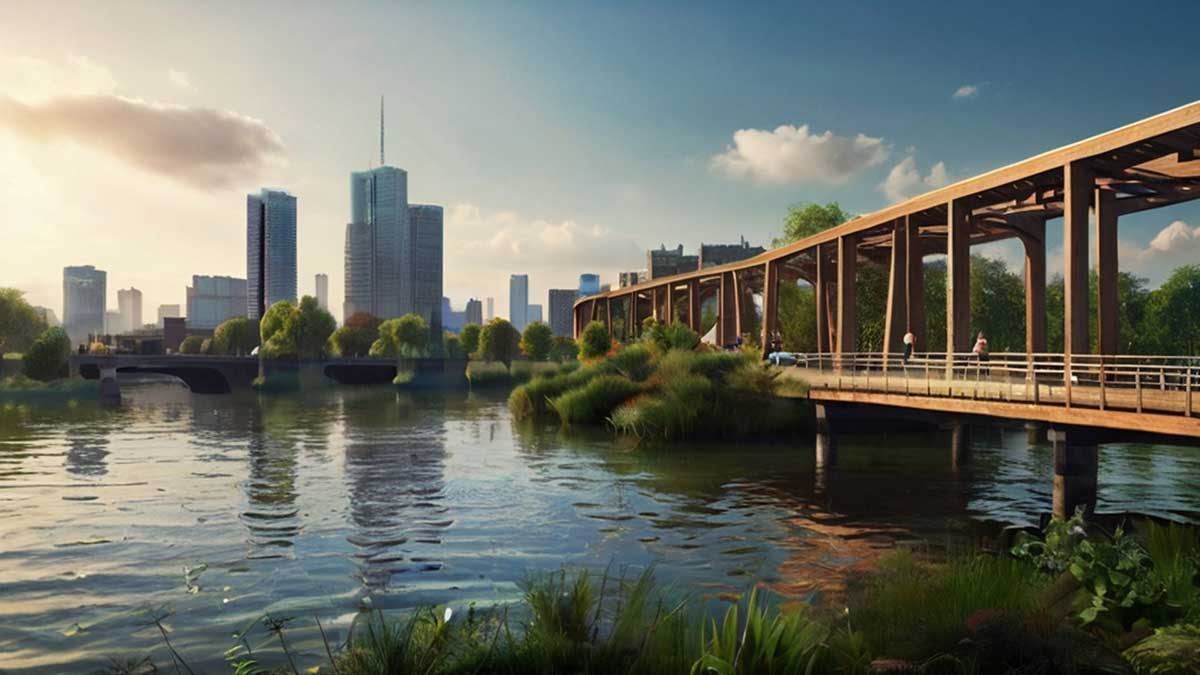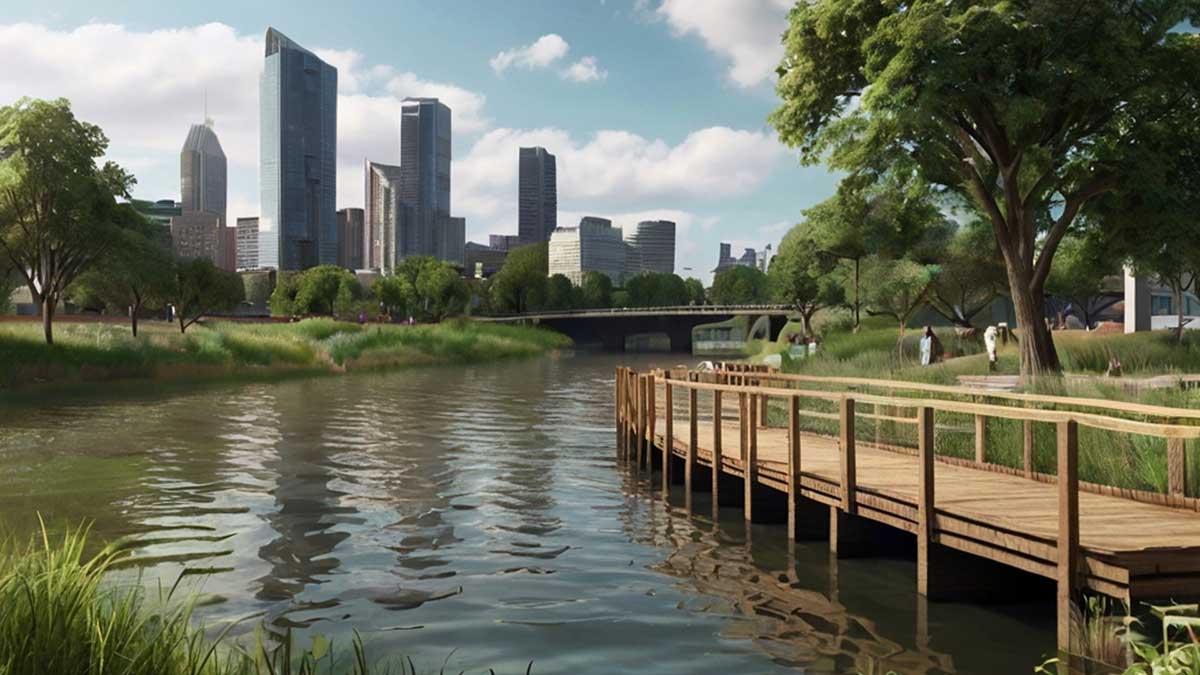The term “sponge-city” was coined in the late 1990s by Japanese architect Kuniko Urashima. Since then, it has gained prominence in the fields of urban planning and sustainable architecture, among the many planners, designers, government officials, etc., involved in these disciplines, and also among citizens concerned about the future development of our cities. After all, some 56% of the world’s population already resides in urban areas (2021), and it is expected to reach nearly 70% by 2050.

The “sponge city” is an innovative and promising solution to the environmental, social and economic challenges faced by expanding urban areas as a result of climate change. Therefore, urban spaces that respond to the sponge-city model are capable of efficiently absorbing and retaining water, and managing energy and waste, in accordance with the functioning of natural ecosystems.
Indeed, the sponge-city design favours the filtration of rainwater into the ground, as well as its storage and subsequent use. In contrast, traditional urban planning, which historically relied on impermeable pavements, relies solely on sewerage networks for flood management.

However, in addition to minimising the environmental impact of urban areas, sponge cities seek to improve the quality of life for residents at the same time. They have rain gardens, green roofs, permeable pavements, parks and wetlands, and underground water tanks. They are therefore able to manage water more naturally and efficiently.
By Ángel Ibáñez Pérez, Senior MEP Engineer in Amusement Logic’s Architecture Department






